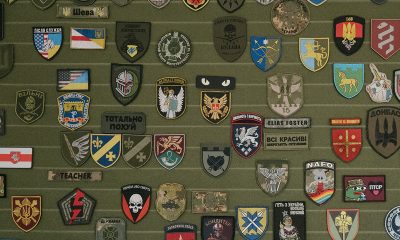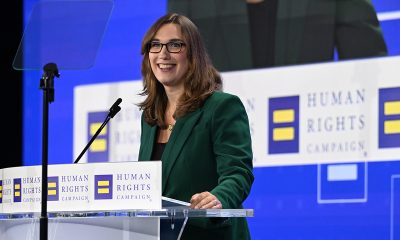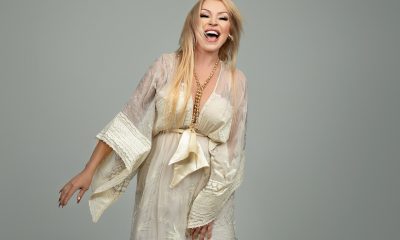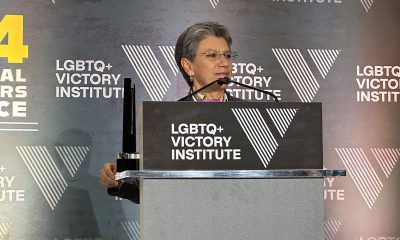a&e features
10 hidden gems by George Michael
Shocking Christmas death sparks reappraisal of out singer’s lesser-known track
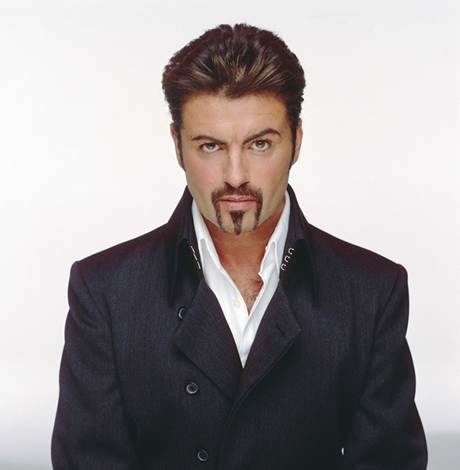
Given the shocking death of pop superstar George Michael on Christmas Day at the age of 53, it’s not surprising that his mourning fans have been listening through his outstanding catalog of music, which stretches more than 30 years as a solo artist and as one half of the duo Wham!, and reliving their favorite moments from the gifted musician.
Most everybody knows his many monster hits: “Wake Me Up Before You Go-Go,” “Careless Whisper,” “Everything She Wants,” “I Knew You Were Waiting for Me” (with Aretha Franklin), “Faith,” “Father Figure,” “One More Try,” “Monkey,” “Playing for Time” and “Don’t Let the Sun Go Down on Me” (with Elton John) were all No. 1 singles in the U.S.
Other major singles include “I Want Your Sex,” “I’m Your Man,” “A Different Corner,” “Freedom ‘90,” “Too Funky” and “Fastlove.” While most readers will be familiar with these, there’s another side to George Michael’s music that might be ripe for discovery by fans who haven’t delved fully into his extensive body of work. Here are 10 lesser-known George Michael gems you may not know.
“Battlestations” (1986)
By the time Wham! made it big, George Michael was already eyeing a solo career. The global smash “Careless Whisper” was Michael’s first solo single even though in the U.S. it was credited to Wham! Featuring George Michael and it was included on Wham!’s chart-topping second album, “Make it Big.”
After announcing Wham!’s dissolution in early 1986, Michael promised one final album with the duo and a farewell concert. Wham! went out with a bang at a massive show on June 28, 1986 at Wembley Stadium. The last album is essentially a compilation of a few newly recorded tracks, assorted singles and leftovers (including the now-ubiquitous holiday single “Last Christmas” and the No. 3 smash “I’m Your Man). In North America the album was dubbed “Music from the Edge of Heaven,” while elsewhere it was called “The Final” and featured a different track listing.
One of the highlights is the lithe and funky “Battlestations,” a stripped down electronic-pop gem that recounts a rocky romance similar in theme to the chart-topping “Everything She Wants.” “Battlestations” points to the more mature adult-themed pop that Michael would explore on his classic debut solo album “Faith.”
“They Won’t Go When I Go” (1990)
George Michael was a huge Stevie Wonder fan and covered several of his songs over the course of his career. The finest is his stunning take on the ballad “They Won’t Go When I Go,” which Wonder released on his 1974 album “Fulfillngness’ First Finale.” Michael’s recording, featured on his second solo album “Listen Without Prejudice, Vol. 1,” is a powerfully rendered version with a dynamic multi-layered vocal performance over a simple piano accompaniment. It’s one of George Michael’s most spellbinding tracks, a true testament to his power as a vocalist, arranger and producer of the highest caliber.
“Do You Really Want To Know?” (1992)
In the midst of George Michael’s legal battle with Sony Music over his perception that the corporate behemoth failed to adequately promote his downbeat 1990 album “Listen Without Prejudice, Vol. 1,” Michael donated three dance tracks that were originally intended for a planned upbeat sequel to the intense and serious Vol. 1 to the AIDS charity compilation “Red Hot + Dance.”
One track, the high-energy “Too Funky,” became a substantial hit, but his two other contributions to the album, “Happy” and the uber-catchy “Do You Really Want to Know?,” are worth checking out as well. They offer a taste of what a terrific listening experience “Listen Without Prejudice, Vol. 2” might have been.
A fourth track, “Crazyman Dance,” was included as a B-side on the “Too Funky” single. Michael had been planning a deluxe reissue of “Listen Without Prejudice, Vol. 1” prior to his death, and while it’s unknown if the project will still see the light of day, it would be fantastic indeed if the complete unreleased “Vol. 2,” including these excellent overlooked dance tracks, is included in the package.
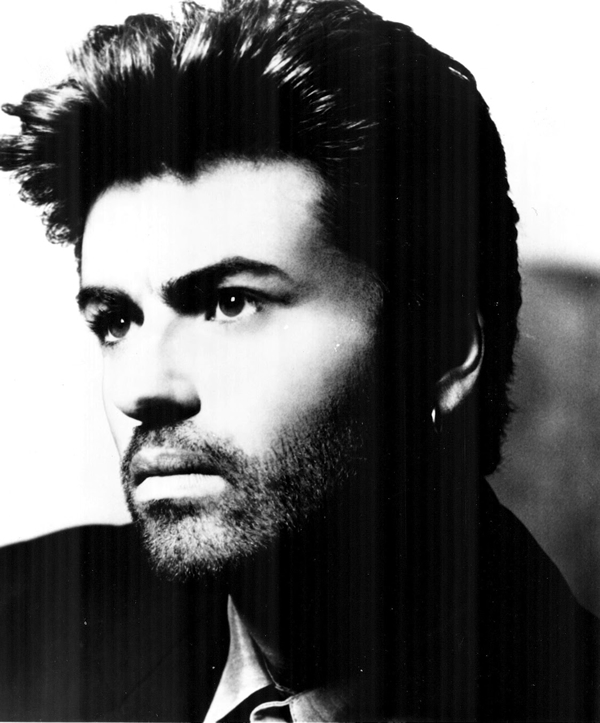
An early ‘90s record company photo of the late George Michael. (Photo by Bradford Branson; courtesy Columbia Records)
“You Have Been Loved” (1996)
George Michael’s 2006 album “Older” was his first in six years, and his return after a high-profile feud with Sony Music essentially stalled his career for half a decade. While the first single “Jesus to a Child” was met with initial excitement in the U.S., and its follow-up “Fastlove” became Michael’s final major American hit, the album performed markedly worse in the U.S. than in his native U.K. and other countries internationally.
The downbeat tone of the album, largely inspired by the 1993 death of Michael’s lover Anselmo Feleppa of an AIDS-related brain hemorrhage, did not translate well to U.S. radio and many of the low-key but exquisite tracks that became popular internationally were overlooked in America. One in particular is the stunning and heartbreaking tribute “You Have Been Loved,” a sublime recording brimming with genuine emotion. Michael delivers one of his greatest vocal performances on a song that shows his heart firmly on his sleeve.
“If I Told You That” (duet with Whitney Houston, 2000)
Whitney Houston originally released the smooth and funky R&B gem “If I Told You That” for her smash 1998 album “My Love is Your Love.” Two years later she re-recorded it for inclusion on a greatest hits set as a duet with George Michael. His soulful vocal fits the vibe of the song perfectly and he and Houston make a dynamic pair, generating plenty of chemistry.
The video, featuring Houston and Michael dancing and singing the song together, looking and sounding their best, is startlingly poignant for such an upbeat song. It seems to speak directly to the waste of extraordinary talent represented by the early deaths of two of pop music’s most shining stars. Had the track been released a decade earlier, it surely would have soared to the top of the American pop charts. In 2000, at a time when neither Houston nor Michael were riding high on the pop charts as in their heyday, the song was a minor hit internationally but in the U.S. it was essentially ignored.
“The Long and Winding Road” (2002)
Michael performed this sublime cover of the Beatles’ 1970 classic “The Long and Winding Road” for a 1999 concert in tribute to Paul McCartney’s late wife Linda, who had died after a long battle with cancer in 1998. Michael later included his recording as one of the B-sides to this sexy U.K. dance single “Freeek!” Particularly in the later part of his career, Michael often relied upon covers of some of his favorite songs and he was a gifted interpreter of other artists’ work. This smooth and empathetic vocal on the Beatles’ final single lends it a poignancy and gravitas that fits the somber occasion for which it was performed.
“John and Elvis Are Dead” (2004)
George Michael’s final studio album, “Patience,” was a substantial hit internationally with several chart singles, but in the U.S. it sank without a trace rather quickly. “Amazing” and “Flawless (Go to the City)” were hits in American clubs, but Top 40 radio unfortunately no longer had interest in Michael.
One of the album’s high points is the emotional ballad “John and Elvis Are Dead,” a moving reflection on the senseless loss of some of the world’s greatest sources of light and talent. With a sweet vocal by Michael and a video that features video clips of Presley, Lennon and others gone too soon, the song’s emotional impact is only heightened by the realization that we can now include Michael himself in the recitation of shining stars so important to so many people that the universe allowed to slip away far too young.
“An Easier Affair” (2006)
A quarter century after forming Wham! with his former school-mate Andrew Ridgeley, Michael released his elaborate multi-disc career retrospective “Twenty-Five.” The collection gathered most of his big hits, a few new recordings and a disc of rarities and B-sides.
“An Easier Affair” is a song newly recorded for the project, a slick upbeat dance-pop number that was a substantial hit internationally but was completely passed by in the U.S. It had been a decade since George Michael had scored a hit in America (“Fastlove” in 1996) so perhaps it’s not surprising the song, despite its commercial sheen and catchy upbeat melody, was neglected by American radio and MTV. The uplifting, gay-positive lyrics probably didn’t help: “I told myself I was straight/But I shouldn’t have worried/Cause my maker had a better plan for me.”
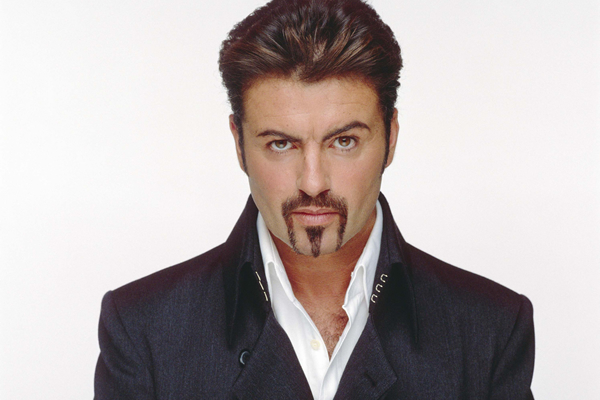
A photo used to promote George Michael’s 2008 concert at the Verizon Center for his ’25 Live Tour’ in 2008. (Photo courtesy Live Nation)
“White Light” (2012)
After focusing mostly on downbeat material and covers in recent years, after a 2011 health scare left him in the hospital for a month with a dangerous bout of pneumonia, Michael returned the following year with the kinetic electro-pop “White Light.”
The harrowing song seems to take on his lifestyle of recent years, which had been marked by drug arrests and health problems. It was a declaration that he was still here and ready to take on the world set to a sleek and modern electronic beat. It’s one of his most cunningly constructed singles and should have marked his triumphant return to the mainstream.
Alas, the single was all but ignored in America and the album that was planned in its wake never appeared. “White Light” was Michael’s final original studio single, ironic given its determination that “tomorrow is mine.” He was trying, which makes his shocking loss only a few years later all the more heartbreaking.
“Let Her Down Easy” (2014)
George Michael’s final album was 2014’s “Symphonica,” a collection of some of his original material and an excellent selection of covers performed live at the Royal Albert Hall with orchestral arrangements on his Symphonica Tour of 2011-2012. “Let Her Down Easy” was the album’s single and, although it was obviously impossible to imagine at the time, it would end up being his last.
The original recording, a delicate ballad by Terence Trent D’arby from his superb 1993 album “Symphony or Damn,” is hard to top, but Michael comes close with his gorgeous and empathetic vocal over a piano accompaniment with subtle strings. Michael’s supple vocal performance is front and center, as strong and beautiful as ever. His talent was still blazing and undiminished even to the very end of his recording career.
a&e features
Queer highlights of the 2026 Critics Choice Awards: Aunt Gladys, that ‘Heated Rivalry’ shoutout and more
Amy Madigan’s win in the supporting actress category puts her in serious contention to win the Oscar for ‘Weapons’

From Chelsea Handler shouting out Heated Rivalry in her opening monologue to Amy Madigan proving that horror performances can (and should) be taken seriously, the Critics Choice Awards provided plenty of iconic moments for queer movie fans to celebrate on the long road to Oscar night.
Handler kicked off the ceremony by recapping the biggest moments in pop culture last year, from Wicked: For Good to Sinners. She also made room to joke about the surprise hit TV sensation on everyone’s minds: “Shoutout to Heated Rivalry. Everyone loves it! Gay men love it, women love it, straight men who say they aren’t gay but work out at Equinox love it!”
The back-to-back wins for Jacob Elordi in Frankenstein and Amy Madigan in Weapons are notable, given the horror bias that awards voters typically have. Aunt Gladys instantly became a pop culture phenomenon within the LGBTQ+ community when Zach Cregger’s hit horror comedy released in August, but the thought that Madigan could be a serious awards contender for such a fun, out-there performance seemed improbable to most months ago. Now, considering the sheer amount of critics’ attention she’s received over the past month, there’s no denying she’s in the running for the Oscar.
“I really wasn’t expecting all of this because I thought people would like the movie, and I thought people would dig Gladys, but you love Gladys! I mean, it’s crazy,” Madigan said during her acceptance speech. “I get [sent] makeup tutorials and paintings. I even got one weird thing about how she’s a sex icon also, which I didn’t go too deep into that one.”
Over on the TV side, Rhea Seehorn won in the incredibly competitive best actress in a drama series category for her acclaimed performance as Carol in Pluribus, beating out the likes of Emmy winner Britt Lower for Severance, Carrie Coon for The White Lotus, and Bella Ramsey for The Last of Us. Pluribus, which was created by Breaking Bad’s showrunner Vince Gilligan, has been celebrated by audiences for its rich exploration of queer trauma and conversion therapy.
Jean Smart was Hack’s only win of the night, as Hannah Einbinder couldn’t repeat her Emmy victory in the supporting actress in a comedy series category against Janelle James, who nabbed a trophy for Abbott Elementary. Hacks lost the best comedy series award to The Studio, as it did at the Emmys in September. And in the limited series category, Erin Doherty repeated her Emmy success in supporting actress, joining in yet another Adolescence awards sweep.
As Oscar fans speculate on what these Critics Choice wins mean for future ceremonies, we have next week’s Golden Globes ceremony to look forward to on Jan. 11.
a&e features
Looking back at the 10 biggest A&E stories of 2025
‘Wicked,’ Lady Gaga’s new era, ‘Sexy’ Bailey and more

Although 2025 was a year marked by countless attacks on trans rights and political setbacks, the year also saw brilliant queer artists continuing to create art. From Cannes and Sundance Award winners now vying for Oscar consideration to pop icons entering new stages of their careers, queer people persevered to tell their stories through different media.
With the state of the world so uncertain, perhaps there’s no more vital time to celebrate our wins, as seen through some of this year’s top pop culture moments. While there’s no collection of 10 stories that fully encompass “the most important” news, here are some events that got the gays going:
10. ‘Mysterious Gaze of the Flamingo’ wins big at Cannes

The Cannes Film Festival has become a crucial start for films hoping to make their way to the Oscars, and first-time director Diego Céspedes won the top Un Certain Regard prize for his intimate western “The Mysterious Gaze of the Flamingo.” The film is set in the ‘80s and is intended as an allegory for the AIDS epidemic. Seeing a film that unpacks vital queer history win one of the most coveted awards at Cannes has been a huge point of pride in the independent filmmaking community.
Since the film bowed at Cannes, it has been selected as Chile’s Oscar entry in the Best International Feature race. Speaking with The Blade during the film’s AFI Fest run in October, Céspedes said: At first, I was kind of scared to have this campaign position in the times that we’re living [in] here. But at the same time, I think the Oscars mean a huge platform — a huge platform for art and politics.”
9. ‘The Last of Us’ returns for an even gayer season 2
While the first season of The Last of Us gave us one of TV’s most heartbreaking queer love stories in the episode “Long, Long Time,” Season 2 doubled down on its commitment to queer storytelling with the blossoming relationship between Ellie (Bella Ramsey) and Dina (Isabela Merced). The show expanded on the pair’s relationship in the original video game, making it perhaps the central dynamic to the entire season. That unfortunately came with more homophobic backlash on the internet, but those who checked out all the episodes saw a tender relationship form amid the show’s post-apocalyptic, often violent backdrop. For their performance, Ramsey was once again nominated for an Emmy, but Merced deserved just as much awards attention.
8. ‘Emilia Pérez’ sparks controversy
Jacques Audiard’s genre-bending trans musical “Emilia Pérez” proved to be an awards season juggernaut this time last year, winning the Golden Globe for Best Musical/Comedy. But when the lead star Karla Sofia Gascón’s racist, sexist, and homophobic old tweets resurfaced, the film’s Oscar campaign became a tough sell, especially after Netflix had tried so hard to sell Emilia Pérez as the “progressive” film to vote for. Mind you, the film had already received significant backlash from LGBTQ+ audiences and the Mexican community for its stereotypical and reductive portrayals, but the Gascón controversy made what was originally just social media backlash impossible to ignore. The only person who seemed to come out of the whole debacle unscathed was Zoe Saldaña, who won the Oscar for Best Supporting Actress over Ariana Grande.
7. ‘Sorry, Baby’ establishes Eva Victor as major talent
Back in January at the Sundance Film Festival, Eva Victor (known by many for her brand of sketch comedy) premiered their directorial debut “Sorry, Baby” to rave reviews, even winning the Waldo Salt Screening Award. Victor shadowed Jane Schoenbrun on the set of “I Saw the TV Glow,” and seeing Victor come into their own and establish such a strong voice immediately made them one of independent cinema’s most exciting new voices. A memorable scene in the film sees the main character, Agnes (played by Victor), struggling to check a box for male or female, just one example of how naturally queerness is woven into the fabric of the story.
Most recently, Victor was nominated for a Golden Globe for her performance in the film, and she’s represented in a category alongside Jennifer Lawrence (“Die My Love”), Jessie Buckley (“Hamnet”), Julia Roberts (“After the Hunt”), Renate Reinsve (“Sentimental Value”) and Tessa Thompson (“Hedda”). The film also received four Independent Spirit Award nominations overall.
6. Paul Reubens comes out in posthumous doc

While Paul Reubens never publicly came out as gay before passing away in 2023, the two-part documentary “Pee-wee as Himself” premiered back in May on HBO Max, giving the legendary comedian a chance to posthumously open up to the world. Directed by Matt Wolf, the documentary explores how Reubens found his alter ego Pee-Wee Herman and why he kept his private life private.
The documentary won an Emmy in the Outstanding Documentary or Nonfiction Special category and remains one of the most critically acclaimed titles of the year with a 100% Rotten Tomatoes score. Also worth noting, the National Geographic documentary Sally told the posthumous coming out story of Sally Ride through the help of her long-time partner, Tam O’Shaughnessy.
5. Lady Gaga releases ‘Mayhem’
Lady Gaga entered a new phase of her musical career with the release of Mayhem, her seventh album to date. From the frenzy-inducing pop hit Abracadabra to the memorable Bruno Mars duet featured on “Die With a Smile,” seeing Gaga return to her roots and make an album for the most die-hard of fans was especially rewarding after the underwhelming film releases of “House of Gucci” and “Joker: Folie à Deux.” Gaga has been touring with The Mayhem Ball since July, her first arena tour since 2018. She even extended her tour into 2026 with more North American dates, so the party isn’t stopping anytime soon. And Gaga is even set to make an appearance next May in “The Devil Wears Prada 2.”
4. Cynthia Erivo, Ariana Grande perform at the Oscars

While “Wicked: For Good” didn’t quite reach the heights of the first film, we will forever have Cynthia Erivo and Ariana Grande’s breathtaking live performance that opened the 97th Academy Awards. The pair sang a rendition of “Over the Rainbow,” “Home,” and “Defying Gravity,” paying proper homage to the original 1939 “Wizard of Oz.” Even non-Wicked fans can’t deny how magical and brilliantly staged this performance was. With both Erivo and Grande up for acting Oscars last year, they’re hoping to repeat success and make history with consecutive nominations. Either way, let’s hope there’s another live performance in the making, especially with two new original songs (The Girl in the Bubble and No Place Like Home) in the mix.
3. Indya Moore speaks out against Ryan Murphy
Indya Moore has consistently used social media as a platform for activism, and in September, posted a 30-minute Instagram live speaking out against “Pose” co-creator Ryan Murphy. Moore claimed that Murphy wasn’t being a true activist for trans people. “Ryan Murphy, we need you to do more. You need to address the racism, the violence, and the targeting of people on your productions, Ryan Murphy. You do need to make sure trans people are paid equally. Yes, Janet did the right thing,” Moore said. Murphy was also back in the headlines this year for the critically panned “All’s Fair” and the controversial “Monster: The Ed Gein Story” starring Laurie Metcalf and Charlie Hunnam.
2. Cole Escola wins Tony for Best Leading Actor
Few pop culture moments this year brought us together more than Cole Escola winning a Tony award for “Oh, Mary!” the Broadway show they created, wrote and starred in (we love a triple threat!) Escola made history by becoming the first nonbinary person to win a Tony in the leading actor category, and seeing them excitedly rush to the stage wearing a Bernadette Peters-inspired gown instantly became a viral social media moment.
The cherry on top of Escola’s major moment is the recent news that they are writing a Miss Piggy movie with Jennifer Lawrence and Emma Stone producing — news that also broke the internet for the better. We cannot wait!
1. Jonathan Bailey makes gay history as ‘Sexiest Man Alive’

The same year as his on-screen roles in blockbusters “Jurassic World Rebirth” and “Wicked: For Good,” Jonathan Bailey made history as the first openly gay man to be named People magazine’s “Sexiest Man Alive.” The fact that it took 40 years for an openly gay man to earn the title is a signifier of how far we still have to go with queer representation, and seeing Bailey celebrated is just one small step in the right direction.
“There’s so many people that want to do brilliant stuff who feel like they can’t,” he told PEOPLE, “and I know the LGBT sector is under immense threat at the moment. So it’s been amazing to meet people who have the expertise and see potential that I could have only dreamed of.” In 2024, Bailey founded the charity titled The Shameless Fund, which raises money for LGBTQ+ organizations.
a&e features
Your guide to D.C.’s queer New Year’s Eve parties
Ring in 2026 with drag, leather, Champagne, and more

With Christmas in the rear view mirror, we can turn our attention to ringing in a much-anticipated New Year with a slew of local LGBTQ parties. Here’s what’s on tap.
Pitchers
This spacious Adams Morgan bar is hosting the “Pitchers’ Perfect New Year’s Eve.” There will be a midnight Champagne toast, the ball drop on the big screens, and no cover, all night long. The bar doesn’t close until 4 a.m., and the kitchen will be open late (though not until close). All five floors will be open for the party, and party favors are promised.
Trade
D.C.’s hottest bar/club combo is leaning into the Shark motif with its NYE party, “Feeding Frenzy.” The party is a “glitterati-infused Naughty-cal New Year’s Even in the Shark Tank, where the boats are churning and the sharks are circling.” Trade also boasts no cover charge, with doors opening at 5 p.m. and the aforementioned Shark Tank opening at 9 p.m.. Four DJs will be spread across the two spaces; midnight hostess is played by Vagenesis and the two sea sirens sensuously calling are Anathema and Justin Williams.
Number Nine
While Trade will have two DJs as part of one party, Number Nine will host two separate parties, one on each floor. The first floor is classic Number Nine, a more casual-style event with the countdown on TVs and a Champagne midnight toast. There will be no cover and doors open at 5 p.m. Upstairs will be hosted by Capital Sapphics for its second annual NYE gathering. Tickets (about $50) include a midnight Champagne toast, curated drink menu, sapphic DJ set by Rijak, and tarot readings by Yooji.
Crush
Crush will kick off NYE with a free drag bingo at 8 p.m. for the early birds. Post-bingo, there will be a cover for the rest of the evening, featuring two DJs. The cover ($20 limited pre-sale that includes line skip until 11 p.m.; $25 at the door after 9 p.m.) includes one free N/A or Crush, a Champagne toast, and party favors (“the legal kind”). More details on Eventbrite.
Bunker
This subterranean lair is hosting a NYE party entitled “Frosted & Fur: Aspen After Dark New Year’s Eve Celebration.” Arriety from Rupaul Season 15 is set to host, with International DJ Alex Lo. Doors open at 9 p.m. and close at 3 p.m.; there is a midnight Champagne toast. Cover is $25, plus an optional $99 all-you-can-drink package.
District Eagle
This leather-focused bar is hosting “Bulge” for its NYE party. Each District Eagle floor will have its own music and vibe. Doors run from 7 p.m.-3 a.m. and cover is $15. There will be a Champagne toast at midnight, as well as drink specials during the event.
Kiki, Shakiki
Kiki and its new sister bar program Shakiki (in the old Shakers space) will have the same type of party on New Year’s Eve. Both bars open their doors at 5 p.m. and stay open until closing time. Both will offer a Champagne toast at midnight. At Kiki, DJ Vodkatrina will play; at Shakiki, it’ll be DJ Alex Love. Kiki keeps the party going on New Year’s Day, opening at 2 p.m., to celebrate Kiki’s fourth anniversary. There will be a drag show at 6 p.m. and an early 2000s dance party 4-8 p.m.
Spark
This bar and its new menu of alcoholic and twin N/A drinks will host a NYE party with music by DJ Emerald Fox. Given this menu, there will be a complimentary toast at midnight, guests can choose either sparkling wine with or without alcohol. No cover, but Spark is also offering optional wristbands at the door for $35 open bar 11 p.m.-1 a.m. (mid-shelf liquor & all NA drinks).
-

 National4 days ago
National4 days agoWhat to watch for in 2026: midterms, Supreme Court, and more
-

 Opinions5 days ago
Opinions5 days agoA reminder that Jan. 6 was ‘textbook terrorism’
-

 Colombia5 days ago
Colombia5 days agoClaudia López criticizes Trump over threats against Colombian president
-

 District of Columbia4 days ago
District of Columbia4 days agoImperial Court of Washington drag group has ‘dissolved’


